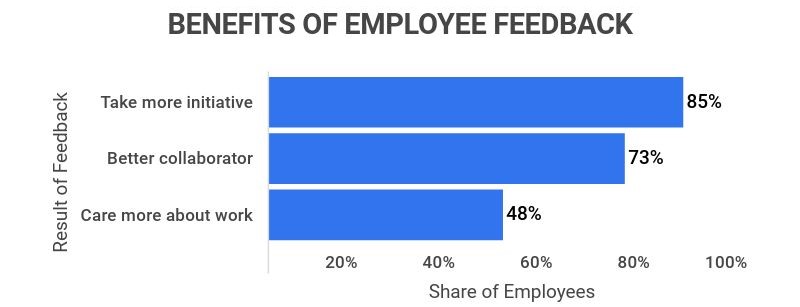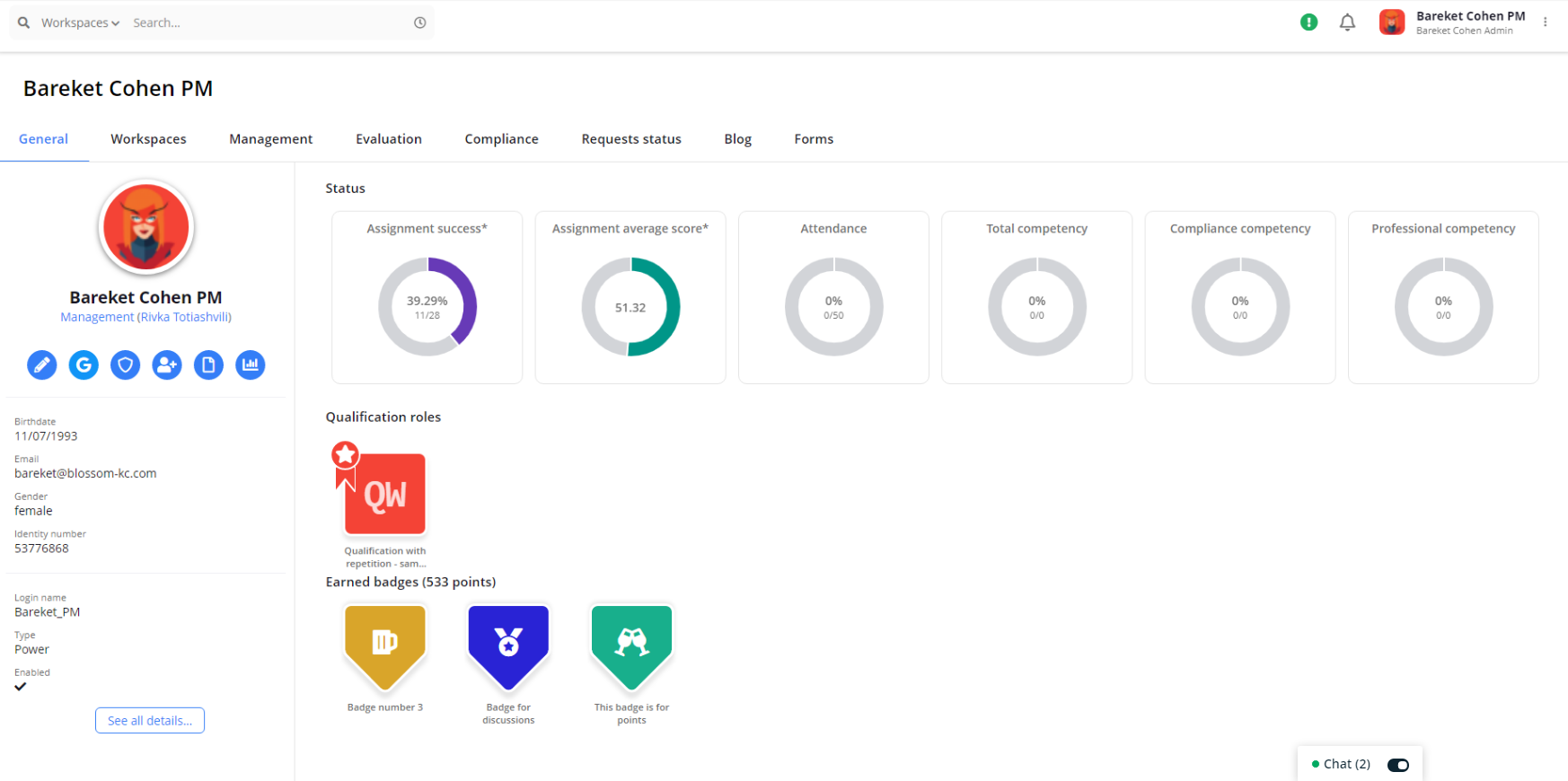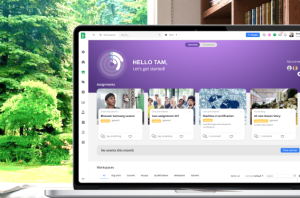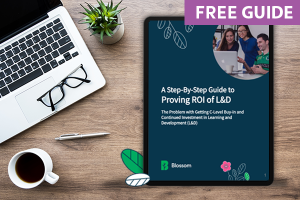Learn how collaboration and shared accountability will contribute to business objectives–aligning with organizational strategy and driving business growth.
Boosting employee motivation and workplace productivity are two critical components of business success.
Outdated employee performance processes and unskilled managers can make people feel uninspired and unsatisfied–leading to burnout and lost productivity.
Modern workplaces are moving away from traditional employee performance management processes and leaning towards a flexible approach reinforcing the behaviors and goals needed to thrive.
Discover how to overhaul your employee performance management framework and the best practice tips for making your performance management meaningful and productive.
Learn how collaboration and shared accountability will contribute to business objectives–aligning with organizational strategy and driving business growth.
What is performance management?
Performance management is a tool to help managers understand, monitor and evaluate employees’ strengths and areas for development. The two-way process between managers and employees offers ongoing and meaningful feedback to enable employees to perform their best and produce the highest-quality work most efficiently and effectively.
Performance management ensures employees have clear expectations about their role, informs compensation, promotion, and succession planning decisions, and drives employee performance, development, and engagement.
Performance management frameworks
Considering 82% of HR professionals say performance management is ineffective at achieving its primary objective, choosing the right performance management framework for your direct report and situation is vital for success.
From the probationary period to ongoing performance appraisals, a solid employee performance management framework offers managers and direct reports a systematic approach to understanding what is happening in the workplace and, often, beyond.
That said, companies need to shift their thinking from believing the primary goal of performance management was to identify employees’ skills, set targets, and discuss work-related projects. Today, employees look to performance management to advance their careers and gain oversight of organizational priorities.
There are various frameworks to use. We’ve listed three performance management frameworks to give you a deeper understanding.
1. Offer continuous feedback
Some eight in ten employees want feedback at the moment rather than delivering aggregated feedback at defined intervals.
Immediate feedback ensures employees know how their work aligns with organizational goals and expectations. It allows quick course corrections and adjustments to keep efforts focused and on track.
Giving continuous feedback strengthens communication and relationships. It demonstrates a commitment to open and honest communication, building trust between employees and managers. Employees feel heard and supported. The emphasis is on management adopting an ongoing coaching relationship with their teams. Secondly, 85% of employees take more initiative when they receive feedback in the workplace. Staff members who take the initiative feel greater ownership and connection to their work. They are more engaged, motivated, and committed to their roles and responsibilities–leading to higher job satisfaction, improved morale, and reduced turnover rates.

So, how can businesses offer continuous feedback so their people flourish at work?
- 360-degree feedback. Eliminate bias and gather feedback from various sources, including peers, other managers, and stakeholders. Provide employees with a holistic view of their performance and areas for development.
- Recognition and rewards. Acknowledge and reward employees for their achievements and efforts–reinforcing positive behavior and motivating them to continue performing at a high level. Use your company communication channels, for example, Slack or HR software, to celebrate achievements with shoutouts.
- Real-time feedback. Offer immediate feedback to employees as situations occur, whether positive reinforcement or constructive criticism. Send an email, organize a Zoom meeting with remote workers, or touch base with employees in the office to discuss projects and give feedback.
The specific methods and frequency of feedback may vary based on individual employees’ needs and the nature of their work. Adapt your feedback approach to best support each individual’s growth and development.
2. Make use of people analytics
Key performance indicators (KPIs) are another performance management approach that involves identifying and tracking specific metrics critical to an organization’s success.
By setting measurable goals and defining key performance indicators for each employee, managers, and staff members take responsibility, allowing for objective performance evaluation against predetermined benchmarks.
Let’s put that into practice and say you want to measure an employee’s participation in learning and development activities. Customizable software, like Blossom, gives managers real insights into employee training. Analyze data from different activities and modules with advanced filtering options. Get actionable data for collaborative discussion and plan the next steps to improving employee performance.

Reflect on work processes, goals, and yearly work cycles and use KPIs to make better, data-driven results about employee performance.
With Blossom’s panoramic view of insights and analytics, employees and managers can identify skill gaps and plan relevant training and development opportunities to enhance performance.
3. Include behavior-based performance management
Robust employee skills are one thing, but behaviors and soft skills are just as important to high-performing individuals and teams.
A behavior-based performance management approach allows for a more targeted and actionable approach to employee improvement. It helps employees and managers understand the specific actions and skills needed to succeed.
This method considers critical behaviors and competencies identified in the job requirements and organizational values by focusing on teamwork, flexibility, problem-solving, or other relevant skills and attributes.
Use a combination of methods to ensure a comprehensive assessment of employee behaviors, such as:
- Employee surveys. Anonymous surveys provide employees with a platform to express their views and provide feedback on their behavior or that of their peers. When developing the next employee survey, include soft skills like teamwork, communication, and adherence to company values.
- Employee self-assessment. Encourage employees to reflect on their behaviors and help them become more reflective, self-aware and take ownership of their actions.
- Direct observation. Notice an individual’s interactions with colleagues, customers, or clients. Why not observe employees directly while performing their job duties? Give constructive feedback and plan areas for development.
Best practices for successful performance management
Continuous improvement is what sets successful businesses apart from their competitors. Employee performance management done well can build trust and loyalty, reducing turnover and the costs associated with hiring and training new employees.
That said, the process for managing employee performance can be improved. In fact, 8 in 10 HR professionals are already experimenting with different ways to improve performance management.








